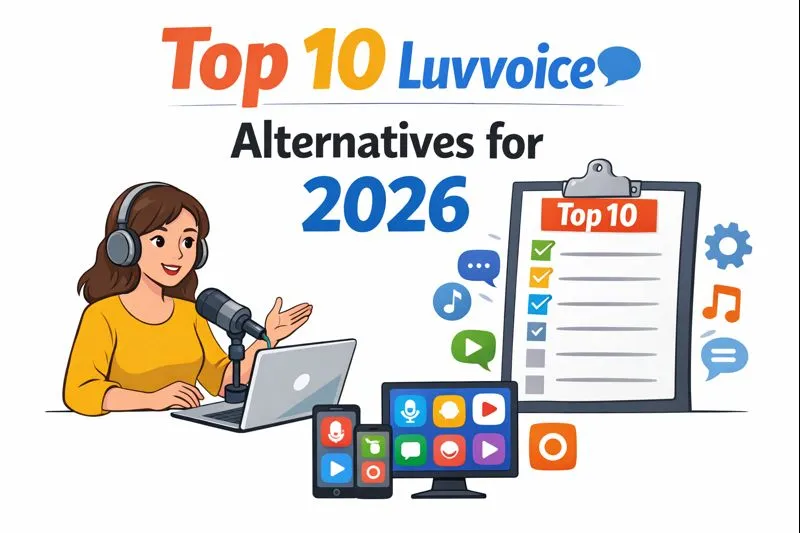Ultimate Guide to AI Video Generation
TL;DR
Understanding AI Video Generation
Okay, so ai video generation is kinda blowing up, right? Ever wondered how a computer can just make a video? It's not magic – mostly.
Here's the lowdown:
- It starts with algorithms. These are like recipes for computers, telling them how to turn text or images into moving pictures. Think of it like telling a story, but instead of writing it out, you're giving the computer the tools to show it.
- At its core, ai video generation often uses complex neural networks. For instance, diffusion models work by starting with random noise and gradually refining it, step-by-step, to match a text prompt or image, much like a sculptor chiseling away at a block of marble. Generative Adversarial Networks (GANs), on the other hand, involve two competing neural networks: one generates content, and the other tries to detect if it's fake. This constant competition pushes the generator to create increasingly realistic outputs. Transformer models, famous for their success in language processing, are also being adapted to understand sequential data like video frames.
- So, when you type in "a cat wearing a hat," the ai analyzes those words, breaks them down, and uses its training data to piece together a sequence of images that represent that concept. It's not just picking pre-made clips; it's generating new pixels frame by frame.
- ai video generation is getting so much better, so fast. I saw a video on YouTube showing how far things have come! It's pretty wild to see text prompts turn into actual moving scenes.
- It's not just for fun, either. Businesses are using it for marketing, education, even in healthcare to explain complex stuff.
Think about it: instead of hiring a whole production crew, a company could potentially use ai to whip up training videos. The possibilities are kinda crazy.
Benefits of Using AI for Video Creation
So, why bother with ai for videos? Well, there's a bunch of good reasons.
First off, speed and efficiency. What used to take days or weeks of shooting and editing can now be done in hours, sometimes even minutes. This is a game-changer for businesses that need to get content out fast.
Then there's cost-effectiveness. Hiring actors, renting equipment, and paying a crew adds up quick. Ai tools can significantly slash those expenses, making video production accessible to more people and smaller businesses.
Scalability is another big one. Need a hundred variations of a marketing video? Ai can handle that without breaking a sweat. You can also easily repurpose content, generating different versions for various platforms or audiences.
And let's not forget creativity and experimentation. Ai can help you explore visual styles and concepts you might not have thought of otherwise. It's a powerful tool for brainstorming and pushing creative boundaries.
Choosing the Right AI Video Generation Tool
Picking the right ai video tool? It's not a walk in the park, lemme tell ya. There's a ton of options out there now, it's hard to know where to even start!
Here's a few things I always consider:
- First, ease of use is huge. Some platforms are super clunky, and you'll spend more time fighting the interface than actually making videos. You want something intuitive, especially if you're not a tech wizard. Look for clear dashboards, drag-and-drop features, and good tutorial support.
- Next, pricing. Some tools are free-ish, but they slap a huge watermark on your videos or limit your export quality. Others have crazy expensive subscriptions. You gotta find that sweet spot between cost and features. Common models include freemium tiers (limited features for free), monthly/annual subscriptions with different feature levels, or pay-per-video credits.
- And don't forget customization. Can you tweak the ai's output to match your brand's style? Are there enough templates? Can you upload custom assets like logos or specific images? Some tools offer extensive control over camera angles, character expressions, and background elements, while others are more limited.
- Consider the type of tool too. Are you looking for text-to-video, image-to-video, or ai-powered editing assistants that help refine existing footage? Tools like Synthesys or Pictory focus on text-to-video, while others might specialize in generating avatars or editing workflows.
These ai tools are popping up everywhere! It's important to remember that not all ai platforms are created equal.
Mastering AI Voiceovers for Your Videos
Okay, so you've got your ai-generated video looking pretty snazzy, but the voiceover sounds like a robot reading a grocery list? Big problem.
Here's how to actually make those ai voiceovers sound, well, human:
- Script is key. Don't just throw words at the ai. Write like you're talking to someone. Short sentences, contractions – the whole shebang. Read it aloud yourself first to catch awkward phrasing.
- Play with parameters: Most ai voice tools let you tweak things like speed, pitch, and even emotion, so don't be afraid to experiment. A little tweaking can make a HUGE difference. Try subtle variations rather than drastic changes.
- Add pauses: Humans don't talk in a constant stream of words. Use commas and periods to your advantage, and even insert manual pauses where it feels natural. This helps with pacing and clarity.
- Consider the context: Is it an explainer video? A sales pitch? The tone needs to match or it's just gonna feel off. A calm, measured tone for an explainer versus an energetic, enthusiastic tone for a sales pitch.
Did you know that adding subtle background noise, like the sound of a coffee shop, can trick the listener into thinking the voiceover was recorded in a real environment?
Getting the voice right is just as important as the visuals.
Step-by-Step Guide to Creating AI Videos
Alright, so you've got your script and know what kinda video you wanna make. Time to actually, you know, make it.
- First, pick your ai tool. This is important, as mentioned earlier! Make sure it fits your needs and budget.
- Next, feed it your stuff: This means your script, any images, or even just a general idea of what you're going for. The more detailed your input, the better the output will likely be.
- Then you wanna tweak the settings, most ai tools let you play around with things like style, pacing, and even the "mood" of the video. Don't just accept the default! Explore the options for camera movement, character actions, and visual effects.
- Finally, preview and refine: Watch the whole thing through, make notes, and then go back and make tweaks. ai isn't perfect, so expect to do some back-and-forth. This might involve adjusting prompts, re-generating specific scenes, or editing the final output in a separate video editor.
It's kinda like directing a movie, but the actors are lines of code.
Tips and Tricks for Better AI Video Quality
So, you've made it this far – awesome! But how do you go from "meh" ai video to something that actually wows? It's all in the details, really.
Be specific, like really specific. Instead of "a dog," try "a golden retriever puppy playing in a field of sunflowers at sunset." The more details, the better the ai can understand what you're going for. Think about lighting, camera angles, and even the emotional tone.
Experiment with different keywords and prompts. Don't be afraid to try out a bunch of different things. You might stumble upon something amazing you never expected! Sometimes a slight rephrasing can yield dramatically different results.
Leverage negative prompts. These tell the ai what not to include. For example, "forest, but no people" can help you get that pristine nature scene you're after. This is crucial for avoiding unwanted elements.
Resolution, frame rate, aspect ratio – these aren't just buzzwords. Getting them right can make a HUGE difference in the final product. Higher resolution means sharper images, and the right frame rate (like 24fps for a cinematic look or 60fps for smooth action) can make motion look smoother. Most ai platforms allow you to select these before generation or during export.
Controlling the style and aesthetics of the video is everything. Do you want it to look like a painting? A cartoon? A hyperrealistic film? Most ai tools let you dial these in through style presets, specific prompt keywords (e.g., "cinematic lighting," "anime style"), or by choosing different underlying models.
Finding the balance between realism and creativity is key. ai can do some wild stuff, but sometimes the most effective videos are the ones that feel grounded in reality, you know? Don't be afraid to let the ai surprise you, but also know when to rein it in for clarity and impact.
ai video is constantly evolving, and there's always something new to learn. Keep experimenting, keep pushing boundaries, and who knows? Maybe your next ai video will be the one that goes viral.
Conclusion: The Evolving Landscape of AI Video
We've covered a lot, from the nuts and bolts of how ai video generation actually works to practical tips for making your creations shine. It's clear that this technology is moving at lightning speed, offering incredible opportunities for creators, businesses, and educators alike.
Remember, ai video isn't about replacing human creativity, but augmenting it. It's a powerful new tool in your storytelling arsenal. Whether you're looking to streamline your workflow, cut down on costs, or simply explore new creative avenues, ai video generation is here to stay.
The landscape is constantly changing, with new tools and techniques emerging all the time. So, the best advice is to stay curious, keep experimenting, and embrace the possibilities. The future of video creation is exciting, and you're right in the middle of it.





